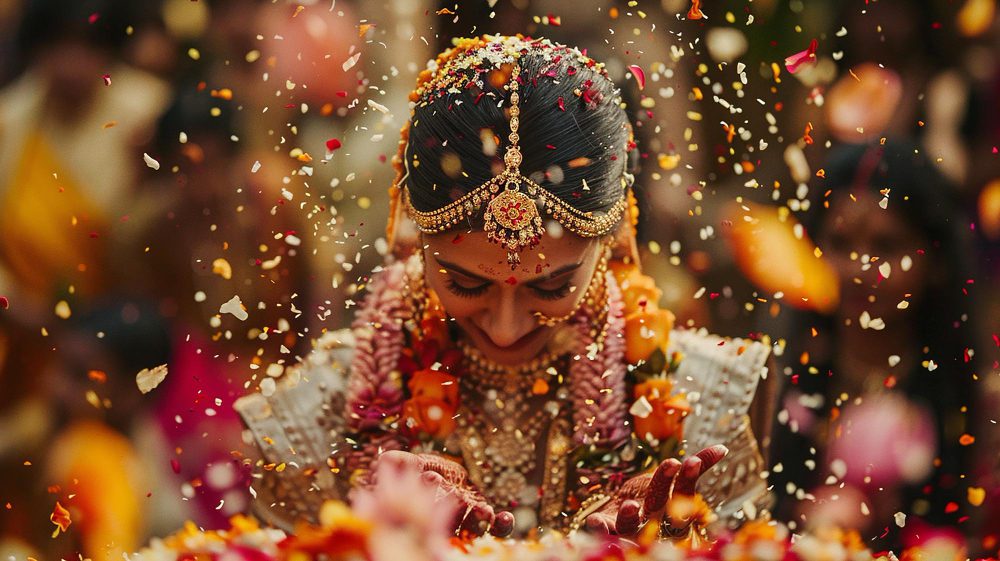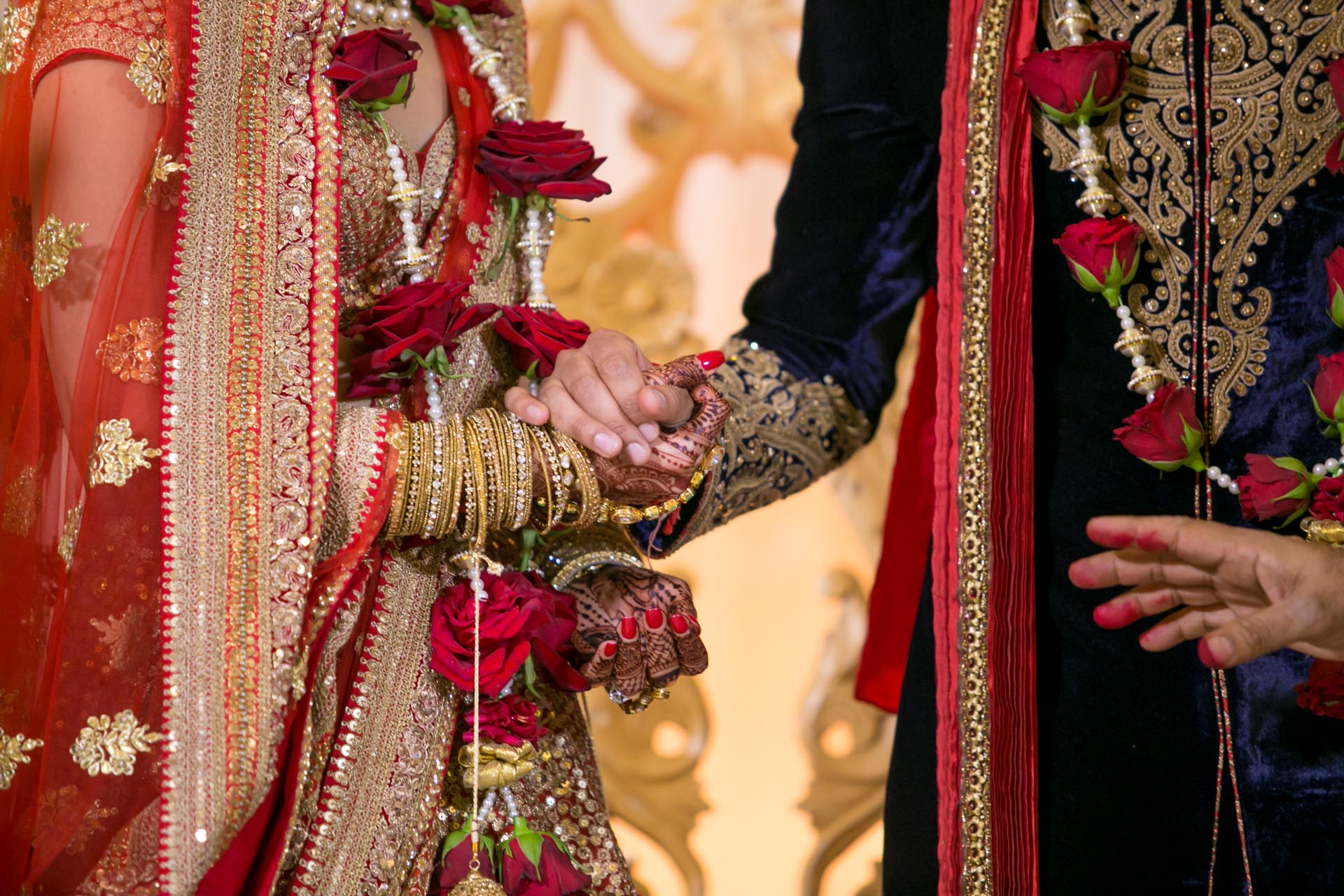The sanctity of love in Hindu weddings reflects a rich tradition, full of colour, form, mysticism, and spirituality. A Hindu wedding photographer plays a crucial role in capturing these moments. Moreover, it is an event that celebrates unity and shared cultural heritage. Hindu weddings are profound events, deeply rooted across generations, filled with vibrant rituals and cultural symbolism. Additionally, these ceremonies represent the blending of families and traditions. A Hindu wedding photographer’s role is to capture these meaningful moments. They showcase both the emotional and cultural aspects of the ceremony while highlighting the beauty of this centuries-old tradition. This guide provides insights into Hindu wedding photography, offering useful tips on how to take meaningful and timeless photos.
Overview of Hindu Weddings
Hindu weddings are elaborate affairs, seen as the union of two families, cultures, and religions. They are characterised by stunning colours, exquisite ornaments, and soulful music, which establish a deep, spiritual connection. Weddings can span one to three days, encompassing pre-wedding, wedding, and post-wedding ceremonies. Each has its own cultural and spiritual significance.
A Hindu wedding photographer must understand these practices and their importance. Capturing rituals like lighting the sacred fire (Agni), circling it seven times (Saptapadi), and exchanging garlands reflects moments of deep cultural meaning. These moments go beyond their visual beauty.
Key Traditions and Rituals
Hindu weddings feature several rituals, some shared across regions while others are specific to certain cultural groups. Key ceremonies include:
- Ganesh Puja: Invoking Lord Ganesh to remove obstacles.
- Jaimala: The exchange of garlands, symbolising acceptance by each other’s families.
- Kanyadaan: The bride is given away by her family to the groom.
- Saptapadi: The couple takes seven vows around the sacred fire.
- Sindoor and Mangalsutra: The groom places sindoor (vermillion) on the bride’s forehead and a sacred necklace around her neck, marking their union.
These moments are crucial for a Hindu wedding photographer, as they convey both the sacredness of the rituals and the raw emotions of the bride, groom, and their families.
Cultural and Regional Variations in Hindu Weddings

Hindu weddings vary greatly across different regions of India:
- North Indian Weddings: Known for opulent decor, red and gold attire, and the groom’s procession (Baraat).
- South Indian Weddings: Simpler yet deeply symbolic, including rituals like the tying of the Tali.
- Bengali Weddings: Unique customs such as the bride covering her face with betel leaves during the Sindoor Daan ceremony.
A skilled photographer must be sensitive to these variations. They must adapt to the unique customs and nuances of each type of wedding.
Challenges of Hindu Wedding Photography
Photographing a Hindu wedding can be challenging due to fast-moving rituals, changing lighting conditions, and large gatherings of family and friends. Therefore, preparation is key. The photographer must stay unobtrusive during prayers and other rituals. At the same time, they must ensure every shot is visually and culturally meaningful. Understanding the sequence and meaning behind each ritual is essential to represent it authentically and beautifully.
Cultural Sensitivity and Respect for Traditions
Respect for the cultural and religious aspects of Hindu weddings is paramount. Additionally, understanding the expectations of families and participants is essential. This includes knowing when to stay in the background, communicating with the priest or family members for guidance, and dressing appropriately for the occasion. Furthermore, it is important to approach every situation with empathy. A Hindu wedding photographer must also respect emotional boundaries and maintain a calm, professional demeanour throughout the event.
Capturing Emotions in Hindu Weddings
Emotions run high at Hindu weddings, from the nervous excitement of the couple to the tears of joy or sadness during the Vidaai (bride’s farewell). Therefore, capturing these emotions authentically is key to telling the story. Capturing these candid, raw moments alongside posed portraits of the couple and their families is vital to tell a complete story of the wedding.
Equipment Essentials for Hindu Wedding Photography
For Hindu weddings, it is crucial to have the right equipment:
- Cameras and Lenses: A DSLR or mirrorless camera with fast lenses (like 50mm f/1.2 or 70-200mm f/2.8) is essential to handle varying lighting conditions and capture both wide-angle shots and close-up details.
- Lighting Accessories: Depending on the venue, additional lighting, such as flash, diffusers, and reflectors, may be necessary.
- Backups: Dual memory cards, spare batteries, and backup cameras are crucial to ensure the event is fully covered without technical disruptions.
Post-Production and Editing
The editing phase is where the photographer can enhance the vibrant colours, such as the rich reds and golds typical in Hindu weddings, while maintaining cultural authenticity. Selecting key moments, arranging them cohesively, and presenting them in high-quality photo albums or digital galleries ensures the essence of the wedding is well preserved.
Storytelling Through Photography
A Hindu wedding photographer is a storyteller, using images to document not just the rituals but the emotions and relationships. From pre-wedding festivities to the final farewell, a well-crafted narrative reflects the couple’s journey. It celebrates the involvement of family and community in these joyous occasions.
Conclusion
Hindu wedding photography is about more than capturing images; it’s about understanding cultural depth, emotions, and traditions. With the right blend of technical expertise, cultural knowledge, and creative vision, a photographer can create timeless memories that honour the sacred beauty of a Hindu wedding.

